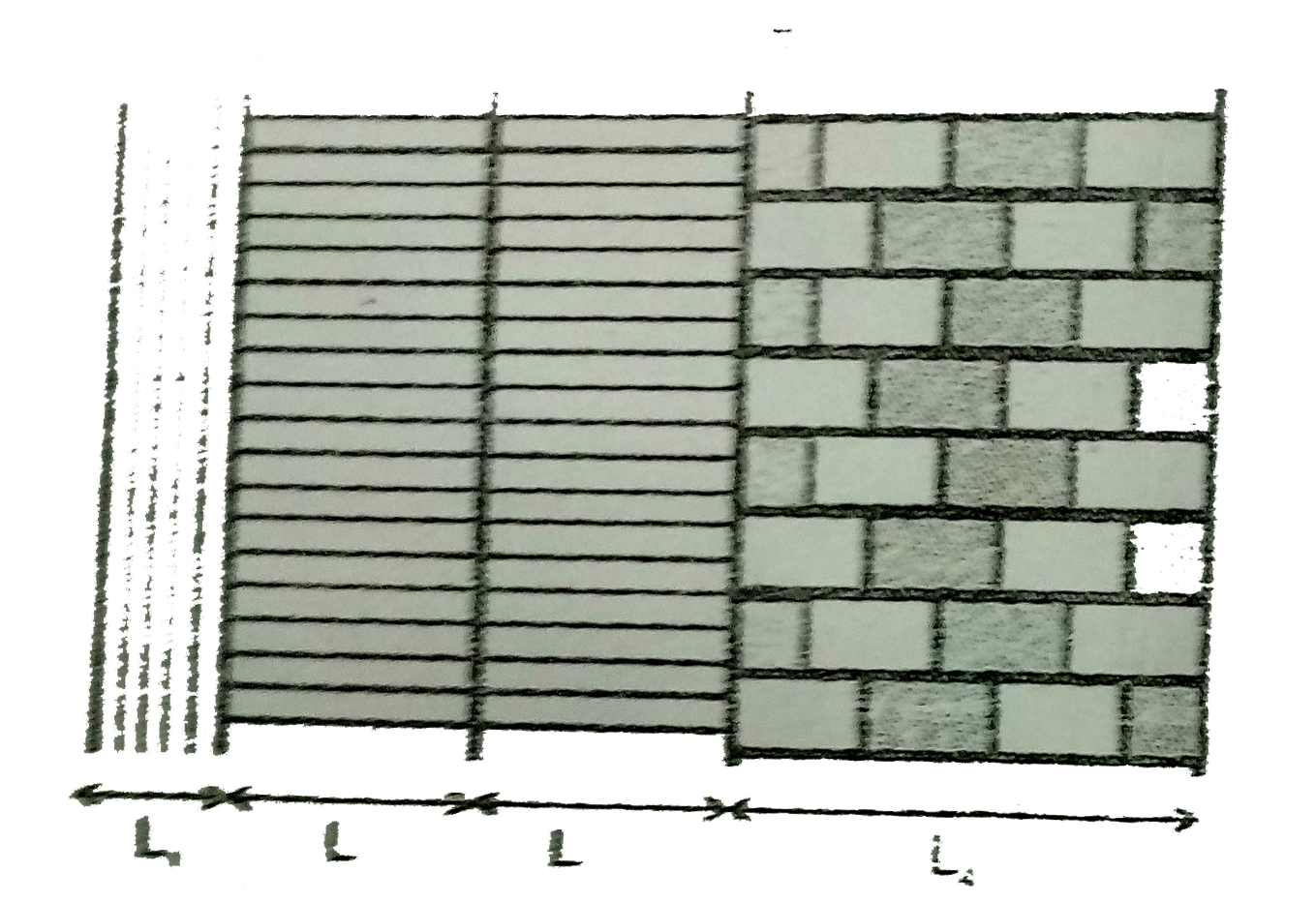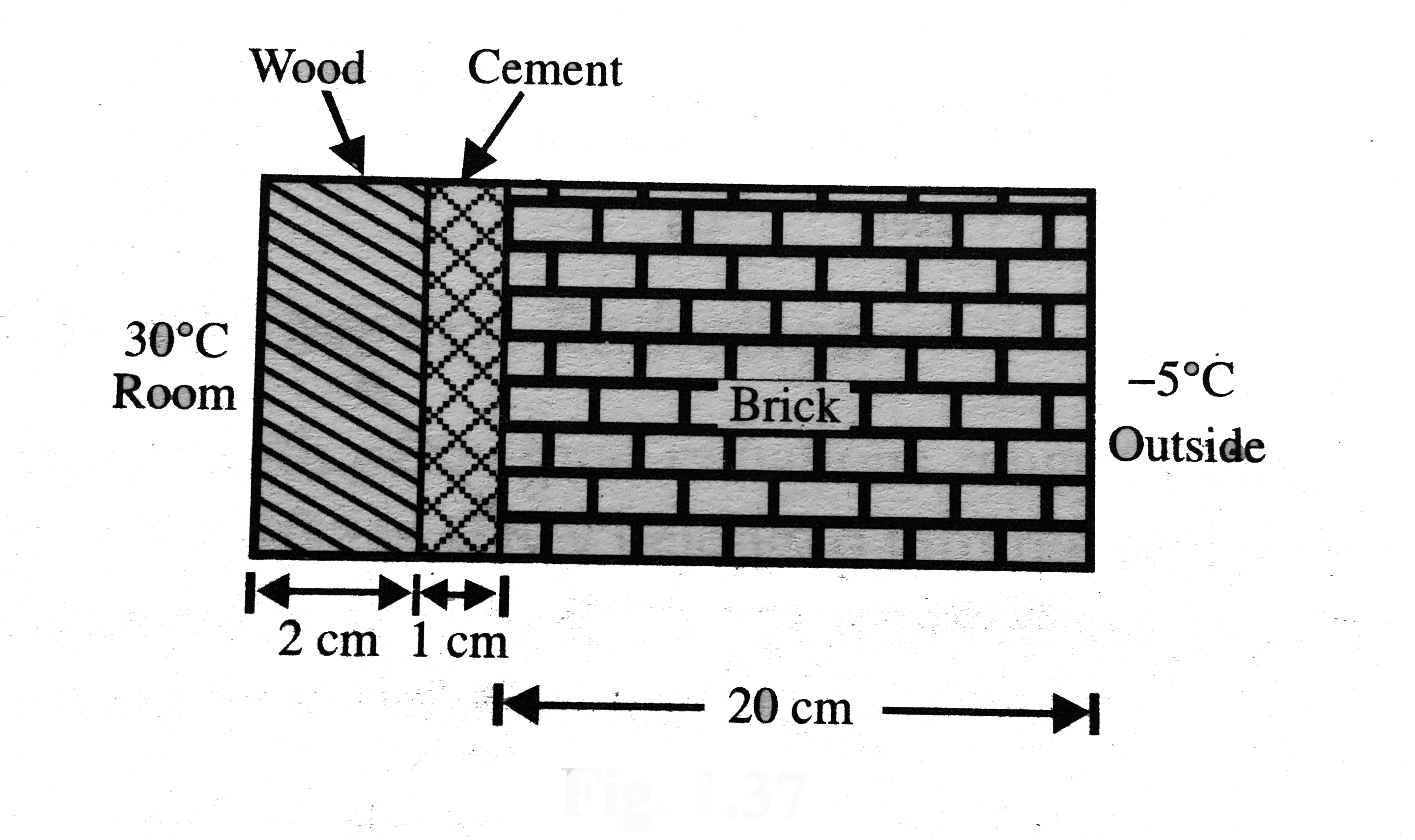The thermal conductivity of brick is 1.7Wm−1K−1, and that of cement is 2.9Wm−1K−1.What thickness of cement will have same insulation as the brick of thickness 20cm.
To find the thickness of cement that will provide the same insulation as a brick of thickness 20 cm, we can use the relationship between thermal conductivity and thickness. The formula we will use is based on the principle that for the same insulation, the ratio of thermal conductivity to thickness must be equal for both materials.
1. Identify the given values:
- Thermal conductivity of brick, k1=1.7W m−1K−1
- Thickness of brick, L1=20cm=0.2m (convert cm to m)
- Thermal conductivity of cement, k2=2.9W m−1K−1
- Thickness of cement, L2 (unknown)
2. Set up the equation for equal insulation:
k1L1=k2L2
3. Substitute the known values into the equation:
1.70.2=2.9L2
4. Cross-multiply to solve for L2:
1.7⋅L2=2.9⋅0.2
5. Calculate the right side:
2.9⋅0.2=0.58
6. Now, substitute back into the equation:
1.7⋅L2=0.58
7. Solve for L2:
L2=0.581.7
8. Calculate L2:
L2≈0.341176m≈34.12cm
Final Answer:
The thickness of cement that will have the same insulation as the brick of thickness 20 cm is approximately 34.12 cm.
---
- Thermal conductivity of brick, k1=1.7W m−1K−1
- Thickness of brick, L1=20cm=0.2m (convert cm to m)
- Thermal conductivity of cement, k2=2.9W m−1K−1
- Thickness of cement, L2 (unknown)
k1L1=k2L2
1.70.2=2.9L2
1.7⋅L2=2.9⋅0.2
2.9⋅0.2=0.58
1.7⋅L2=0.58
L2=0.581.7
L2≈0.341176m≈34.12cm
The thickness of cement that will have the same insulation as the brick of thickness 20 cm is approximately 34.12 cm.
Topper's Solved these Questions
- GEOMETRICAL OPTICSBOOK - ALLENCHAPTER - GEOMETRICAL OPTICSEXERCISE - SOME WORKED OUT EXAMPLES
84 Videos
- GEOMETRICAL OPTICSBOOK - ALLENCHAPTER - GEOMETRICAL OPTICSEXERCISE - EXERCISE -01
65 Videos
- CURRENT ELECTRICITYBOOK - ALLENCHAPTER - CURRENT ELECTRICITYEXERCISE - All Questions
427 Videos
- GRAVITATIONBOOK - ALLENCHAPTER - GRAVITATIONEXERCISE - EXERCISE 4
9 Videos
Similar Questions
The figure shows the cross-section of the outer wall of a house buit in a hill-resort to keep the house insulated from the freezing temperature of outside. The wall consists of teak wood of thickness L1 and brick of thickness (L2=5L1), sandwitching two layers of an unknown material with identical thermal conductivites and thickness. The thermal conductivity of teak wood is K1 and that of brick is (K2=5K). Heat conducion through the wall has reached a steady state with the temperature of three surfaces being known. (T1=25∘C,T2=20∘C and T5=−20∘C). Find the interface temperature T4 and T3.

View SolutionThe molar conductivity of 0.05 M BaCl2 solution at 25∘C is 223Ω−1cm2mol−1. What is its conductivity?
View Solution
Knowledge Check
In question number 3, the thermal conductivity (in Wm−1K−1) if air is
A110B112C114D9130A cylindrical steel rod of length 0.10 m and thermal conductivity 50W.m−1K−1 is welded end to end to copper rod of thermal conductivity 400W.m−1.K−1 and of the same area of cross section but 0.20 m long. The free end of the steel rod is maintained at 100∘C and that of the copper and at 0∘C. Assuming that the rods are perfectly insulated from the surrounding, the temperature at the junction of the two rods–
A20∘CB30∘CC40∘CD50∘C
The molar conductivity of 0.05 M BaCl2 solution at 25∘C is 223Ω−1cm2mol−1. What is its conductivity?
View SolutionFigure shows the cross section of a wall made of white pine of thickness La and brick of thickness Ld==2.0La , sandwiching two layers of unknonw material with identical thicknesses and thermal conductivities. The thermal conductivity of the pine is ka and that of the brick is kd(=5.0ka). The face area A of the wall is unknown. Thermal conduction through the wall has reached the steady state, the only known interface temperatures are T1=25∘C,T2=20∘C, and T5=−10∘C. What is interface temperature T4 ?

View SolutionShow that the SI units of thermal conductivity are W/m−K.
View SolutionAn electric heater is placed inside a room of total wall area 137m2 to maintain the temperature inside at 20∘C. The outside temperature is −10∘C. The walls are made of three composite materials. The inner most layer is made of wood of thickness 2.5 cm the middle layer is of cement of thickness 1 cm and the exterior layer is of brick of thickness 2.5 cm. Find the power of electric heater assuming that there is no heat losses through the floor and ceiling. The thermal conductivities of wood, cement and brick are 0.125W/m∘−C,1.5W/m∘−Cand1.0W/m∘−C respectively.
View SolutionAn electric heater is used in a room of total wall area 137m2 to maintain a temperature of +20∘C inside it when the outside temperature is −10∘C. The walls have three different layers materials . The innermost layer is of wood of thickness 2.5 cm, in the middle layer is od cement of thickness 1.0 cm and the outermost layer is of brick of thickness 25.0 cm. find the power of the electric heater. Assume that there is no heat loss through the floor and the ceiling. The thermal conductives of wood, cement and brick are 0.125,1.5and1.0wa/m/.∘C respectively.
View Solution
An electric heater is used in a room of total wall area 150m2 to maintain a temperature is −5∘C. The innermost layer is of wood of thichness 2.0 cm, the middle layer is of cement of thickness 1.0 cm and the outer-most layer is of brick of thickness 20 cm. Find the power of the electric heater. Assume heat to flow only through the walls. The thermal conductivities of wood, cement and brick are 0.150,0.175 and 1.0W/m∘C, respectively.
View Solution
